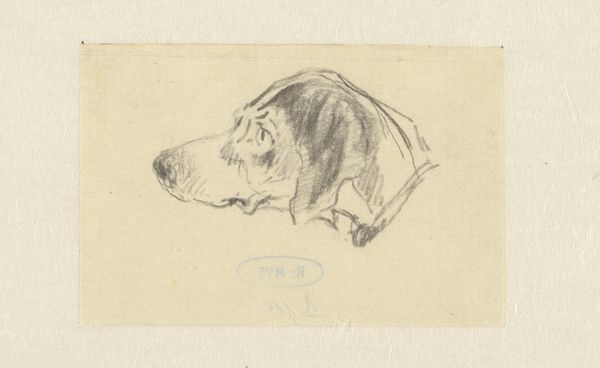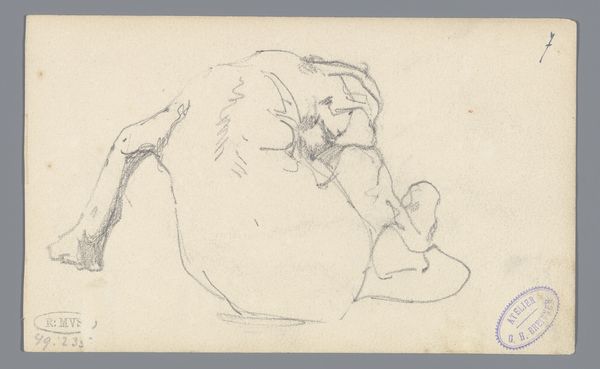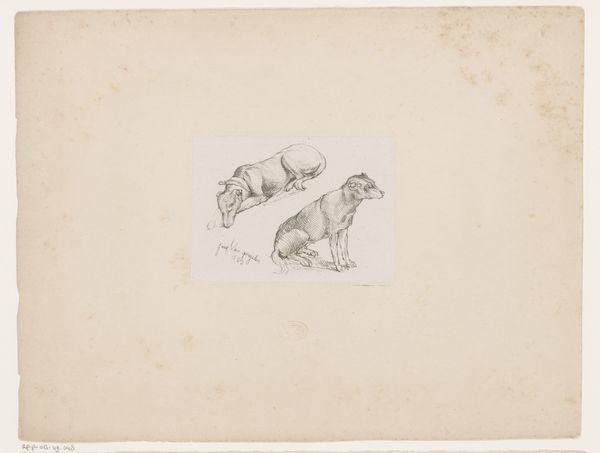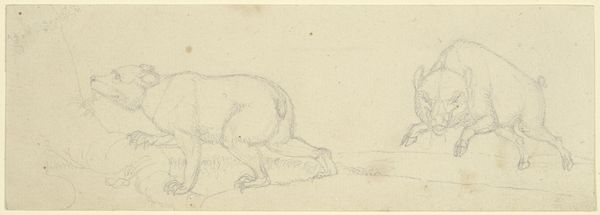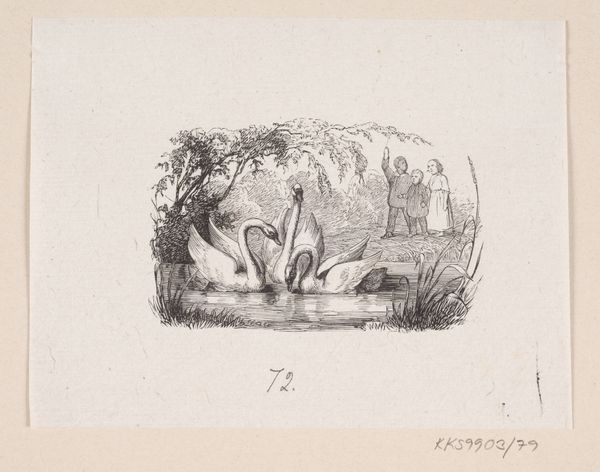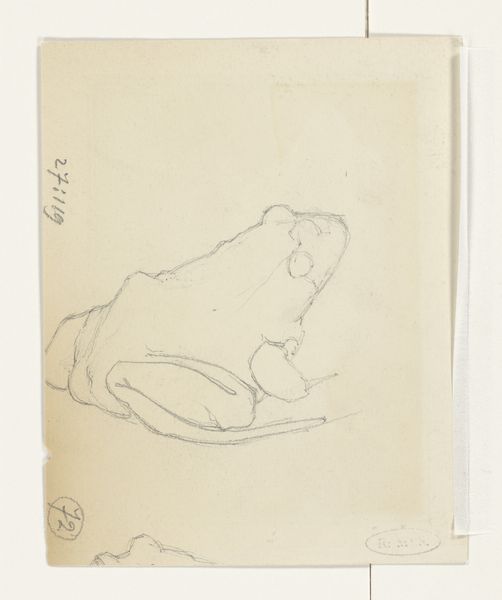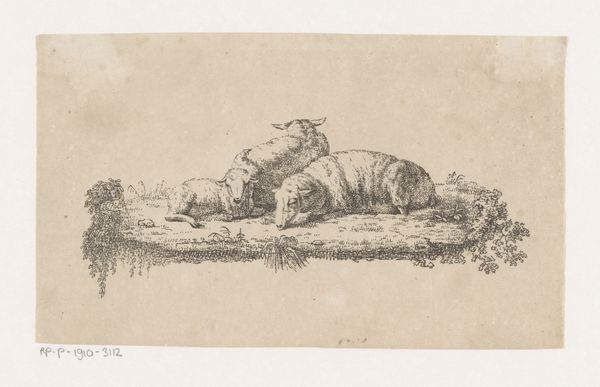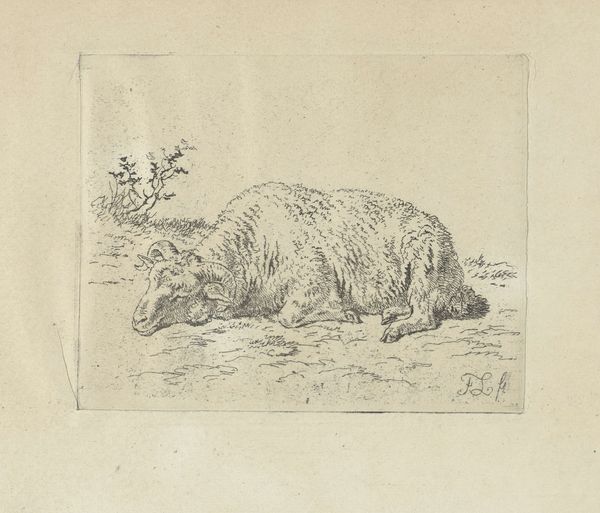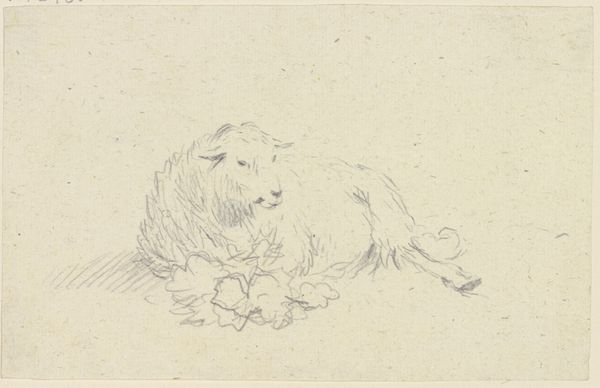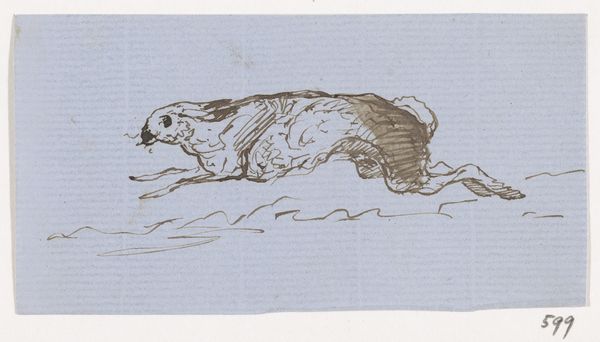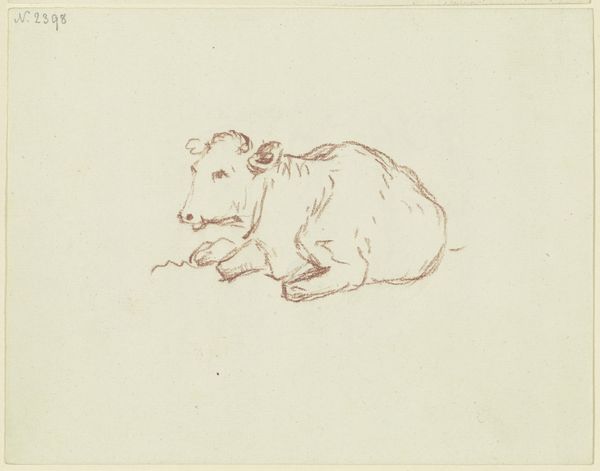
drawing, paper, pencil
#
drawing
#
landscape
#
paper
#
pencil
#
sketchbook drawing
#
realism
Dimensions: height 99 mm, width 130 mm
Copyright: Rijks Museum: Open Domain
Curator: This delicate sketch captures a sheep at rest, entitled "Liggend schaap", which roughly translates to "Lying Sheep." It’s attributed to Alphonse Stengelin and thought to have been created sometime between 1862 and 1938, crafted using pencil on paper. Editor: My first impression is the utter stillness of the scene. There’s an almost melancholic weight to it, a quiet commentary on rural life captured in spare pencil strokes. Curator: Indeed. The artist’s choice of humble materials reflects a direct connection to the subject matter, stripping away any pretension. It really begs the question: what conditions shape our ideas of artistic value? Are we too often focused on grandiose scale, expensive materials? Here, we have a humble drawing of humble animal! Editor: Precisely! And Stengelin presented this at a time when rural communities and their associated industries were being reshaped, and in some instances displaced, by increasing industrialisation. This work, perhaps unintentionally, valorizes agrarian life. What role did art play then, and what role does it play now in influencing or reflecting major historical movements? Curator: I am drawn to the application of pencil on paper - so seemingly straightforward, yet rendered in such an observant way. It's interesting to me, too, how this sort of representational landscape becomes part of constructing "landscape" itself - it invites a reflection on what landscapes do, and have done, for particular economic interests and purposes. And how drawings such as these facilitate this! Editor: You know, looking at the piece I wonder where was this exhibited? And by whom was it collected and preserved? It asks larger questions: What institutional narratives were promoted when it was made, and which survive now? Curator: Examining this Stengelin work certainly forces us to contemplate both artistic expression, material and cultural contexts of artistic labor. Editor: Absolutely, and it reminds us to critically consider what stories art can reveal if we’re willing to examine its path through history.
Comments
No comments
Be the first to comment and join the conversation on the ultimate creative platform.
